If you are looking for Why Going Faster Than Light Leads to Time Paradoxes. You are in the right place. Our galaxy is over a hundred thousand light-years across. A distance is so vast that it defies ordinary understanding. Even humanity’s earliest radio transmission hurtling through space at the speed of light would still only have washed over less than 1,000,000th of the stellar population.
The cosmic speed limit, the speed of light, is so diminutive compared to a galaxy that any aspirations we might harbor for galactic exploration or even just communication seem impossible, at least within human lifetimes.

But humanity has long wondered, could there be a cheat code? Could there be a way to exceed that cosmic speed limit? Could we go faster than light? FTL. There is no other technology that I so keenly wish could be realized than FTL. Since childhood, I’ve looked up at the stars and dreamt of one day reaching them. Of exploring the ocean of space, the zoo of worlds, the menagerie of life.
It almost seems like a cruel cosmic joke that the universe is arranged in such a way that we are able to look out and glimpse its wonders and yet are trapped here by the speed of light. Fated to any other peer through the bars of our cosmic prison and dream. And so it’s no surprise that human ingenuity and aspiration have raged against Einstein’s cosmic speed limit. After all, we’ve never been so good at doing what we are told.
To be clear though, we currently have no way of building or even conceiving of a practical FTO system be it for travel or just for communication. But there are threads that physicists pull out that it is hoped one day might bear fruit. For example, we know that Einstein’s speed limit only truly applies to travel through space, but that space itself has no such constraint. For this reason, there are parts of the universe receding away from us faster in the speed of light as the fabric of the cosmos itself expands in all directions.
Could we one day learn to manipulate space then and somehow use this travel faster than light? The hypothetical Alcubierre drive is perhaps the most famous example of this concept. Inspired by Star Trek’s, warp drive, Miguel Alcubierre showed that there exists a solution within Einstein’s relativistic field equations that in principle, could allow FTL.
By expanding space behind itself and contracting it ahead, a bubble of space could cruise between in the stars at arbitrarily fast speeds. The idea has certainly faced many challenges though, such as requiring the use of exotic matter, enormous energy requirements and even obliterating the destination through the buildup of radiation gathered up by the bubble.
Yet optimists might argue that none of these are truly show-stoppers, merely engineering challenges. A more pressing problem is the folding in quantum effects into the Alcubierre drive. In 2009, Finazzi showed that the warp drive bubble leads to exponentially increasing Hawking radiation on the inside of it. This isn’t just a hazard to their crew, the exponential buildup destabilizes the bubble itself. It’s important to remember that we don’t have a good theory of quantum gravity yet.

And Alcubierre’s drive is conceived in its absence just using general relativity alone. These kinds of quantum concerns don’t just plague warp drives. Wormholes, another hypothetical FTL system, have also been criticized as being possibly unstable due to these quantum effects being ignored by general activity. Ultimately, we can’t truly prove whether wormhole or Alcubierre drives are allowed or not until we have solved quantum gravity or built a working example of one.
The other problem with assessing the feasibility of FTL is that there are multiple ideas out there such as tachyons, craznic optubes, quantum tunneling and entanglement. And each one of those has a diverse number of flavors proposed. For example, the Alcubierre metric has been tweaked many times to reduce energy requirements in various ways. And of course, physicists still surely will continue to conjure up new varieties in the future.
As a result, it seems somewhat hopeless that we’ll ever be able to completely exclude FTL as a possibility. On the one hand, our hearts might rejoice in that because it means that hope persists and the dream will always be alive. But on the other hand, our minds complain because after all this is science and we want definitive clear objective answers, not eternal maybes that will forever be unfalsifiable.
So is there anything that we can definitively say with existing knowledge? Well, it turns out, yes. Despite the fact that we don’t have a theory of quantum gravity, despite the fact that there are countless variants and ideas about FTL systems, there is a definitive statement that we can make about all FTL systems. They all allow for causality-breaking time travel.
When you hear that FDL implies time travel, you might think about sci-fi portrayals of accelerating past the speed of light, but actually, the causality breaking is far more subtle and occurs even with FTL messaging systems alone. The explanation is a little challenging so we’re gonna break it down into small bite-size steps and use diagrams to help us understand it. It’s worth spending a little bit of time on this because the consequences are truly profound.
Let’s start by drawing a line representing one dimension of space along the bottom of the screen and a line representing the time that’s orthogonal to that. We now have a space-time or Minkowski diagram. To get acquainted with this setup, let’s consider a distant star like Vega. This green square represents Vega at a certain point in space. In other words, its location but also at a certain point in time.
Let’s consider that Vega is stationary in this frame of reference so that as we move through time, it traces out this line. Note how it has the same position at all times. This line is what we would call the world line for Vega. And we don’t have to limit ourselves to just Vega, we can for example, put the Earth on the spacetime diagram as well. Earth isn’t moving much compared to Vega, so let’s just assume it’s also stationary in this frame and thus has a parallel world line.
Since we’re ultimately interested in speed when it comes to FTL, let us now familiarize ourselves with what speed looks like on this diagram. Because we are working in the Earth’s rest frame here, we don’t feel ourselves moving, and thus in this frame, we simply move parallel to the time axis. So such world lines correspond to no travel through space. In contrast, instantaneous travel, which is the most extreme FTL possible, would go from the Earth to Vega with no time passing at all.
Thus it would appear as this pink line parallel to the space axis. Between those two extremes, we have traveled at the speed of light, given this yellow line. In a Minkowski diagram like this, light always travels at 45-degree angles just like this. And technically it’s called a “null line”. Removing Vega for the moment, we first note that we are of course free to travel both forward and backward through space.
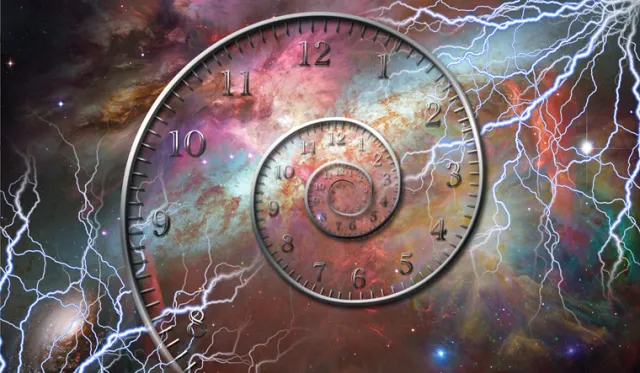
However, if the speed of light is the cosmic speed limit, then any path below the null lines highlighted here, is impossible to achieve. These would require FTL systems. On the other hand, lines above the null are perfectly accessible, such as this stationary world line that the Earth occupies. A slower-than-light or STL ship would travel at some angle between that of a null and a stationary world line.
You’ve mastered the basics of space-time diagrams but now let’s go a little bit deeper. And note some relationships and rules that we’ll need later. Stripping down this diagram, consider the Earth sat in space as shown here. And again, working in the Earth’s rest frame. From Earth’s perspective, we don’t feel like we’re moving. That’s relativity for you. So as time progresses, our location in space is always the same forming this world line.
Crucially, that’s the same as the time axis. In other words, the world line defines the time axis as perceived by those following it. This is important because we all know how relativity screws around with time. But here, there’s a clear definition of where the perceived time axis lives. Now adding the null line back on, we can note the relationship that the space axis is really just a flip of the time axis around the null.
So again, this provides a useful rule for orienting ourselves later when we’ll have to deal with more complicated scenarios. Okay, so we are finally ready to start imagining FTL systems on here. Let’s put Vega back on the diagram as a distant destination. Consider that at some distant location from Vega but one closer to the Earth, a supernova goes off. We’ll call it Supernova X. The radiation from the supernova travels at the speed of light and thus follows a null line.
Following this path, we can see the Earth sees X first and then Vega, marked by these stars. Now imagine that Earth has an FTL messaging system. As soon as Earth sees X, we decide to send a warning to Vega. Recall that FTL lines fall below the null just like this. So we can see that Vega would learn of X before it actually sees it.
Mission accomplished. Now, remember what I said earlier, the whole problem with FTL systems comes down to causality. So let’s look at the order of events here to see if everything makes sense. For this, we need to work through time from the past to the future and track this sequence that occurs. We can do this by taking a slice through time. A simultaneous moment and slide it up the screen from bottom to top noting the sequence of events we see.
And remember, I’m in Earth’s reference frame here, so the time slices here are time as perceived by Earthlings, although, this is also equivalent for Vegans too. So sliding at the page, we can see that the first event is when Supernova X occurs. Sliding further up, we can see that the next event is that Earth sees X and warns Vega. Going further. Third, we see that Vega receives the warning and wants more.
Finally, we see that Vega sees X. Looking at the order, this seems sensible. Cause proceeds effect. For example, Supernova X happens and then Earth sees X. Similarly, Earth warns Vegathen Vega receives the warning. So if you stopped the read the article here and walked away, please don’t, You would erroneously conclude that FTL travel is fine.
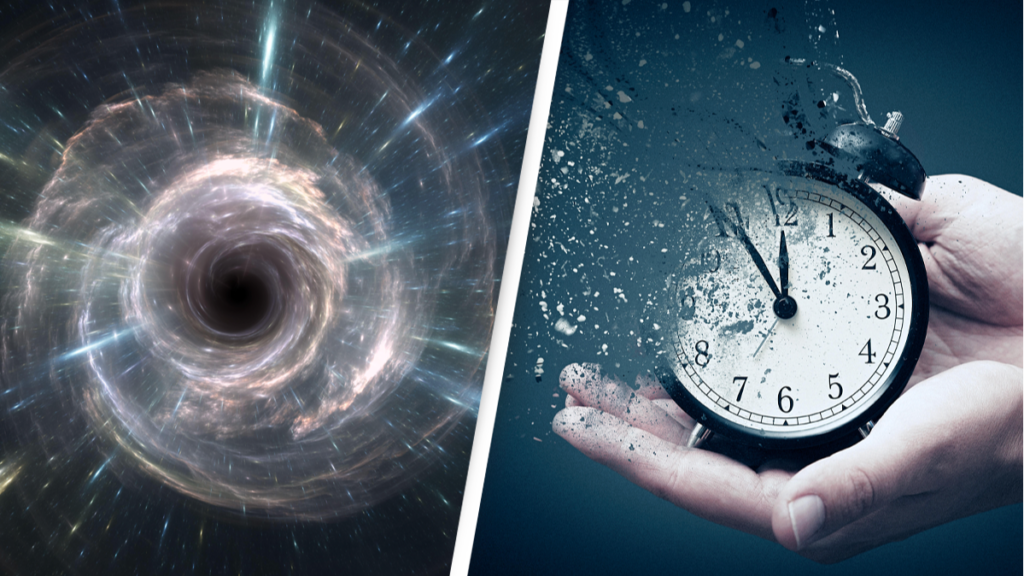
It doesn’t break causality. Cause precedes effects, there’s nothing to worry about. Well, that’s because in order to unveil the causality-breaking power of FTL, we have to add another ingredient into the mix. We have to add a slower-than-light, STL, relativistic ship here. Because doing so leads to some disturbing consequences. So coming back to our diagram, we currently have no STL ships on here. Just Earth, Vega, X. And the FTL message is shown in pink.
STL ships have to follow world lines above the null, as shown here in red. Now remember our rules from before, the world line defines the time axis as perceived by those following it. So the time axis as perceived by the crew of that ship, actually lives along that red line. It’s not the same as the Earth’s time axis in white. The distortion of time is one of those mind-bending consequences of special relativity which our journey to the end of the universe article explores in much more depth.
Now, remember rule number two, that the space axis flips the time axis above the null line. So as perceived by the crew, their space axis actually lives here. This is a remarkable consequence of Einstein’s rule, that the speed of light is the same for all observers. Time and space bend to accommodate its constancy in all frames of reference. Recall before, that we tracked the sequence of events with sliding time slices.
Lines of simultaneous moments. And record that these slices must be parallel to the space axis. So if we want to draw these time slices from the cruise perspective, they must be parallel to the red dash line sliding from the bottom right of the screen to the top left. So coming back to the order of events, look, we already know what the Earthlings and the Vegans thing to happen, but what did the crew of the ship think?
Using our sliding time slice, we can see that the first event in time, as perceived by the ship’s crew, is that Vega receives the warning message from Earth about X. Going further, the second event is that Supernova X happens. Third, we see the Earth sees X, and fourth and final, the Vegans see X. Looking at this order, we can immediately see something very strange. Vega received the warning message X before Earth even sent it.
How is that possible? Cause transpired after the effect. Causality is broken. At this point you might wonder, maybe the problem isn’t so much with FTL but rather with the theory of relativity itself. What happens if we take away those FTL messages? Because if causality violation persists even without FTL, then we would know that it’s not FTL that’s the problem, it’s relativity.
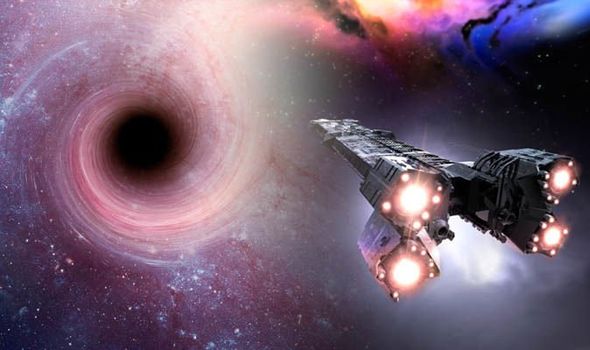
So let’s repeat the experiment, but now I’ve removed that FTL message. Sliding our time slice along, we see that the first event is now Supernova X. Next, the second event is that Earth sees X. And finally, the third event is that Vega sees X. So the sequence makes perfect sense now. No causality violation. Indeed we get the same order that the Earthlings and Vegans would report. So the causality violation of before isn’t a problem with relativity, it’s a problem of FTL itself.
Now you might say, “So what?”Does this disagreement about the order of events truly matter? Isn’t this just an academic question, one with no real-world consequences? Well, I’m afraid not. Causality violation here is profound and it could actually allow the crew to potentially break the universe. To see this, let’s modify the scenario so that the crew are no longer mere observers but can actually intervene.
Let’s modify the FTL worldline just a little. Instead of being sent to Vega, it is intercepted by the crew of the STL ship. So they would receive the message here. After receiving the message, they decide to send a reply back to Earth using an FTL transmitter that they have on board their ship. For a bit of perverse fun, let’s imagine that they send a message back to Earth saying, “Turn off the FTL transmitter.”
But where does this reply live on this spacetime diagram? As I lead, it would follow a world line like this. Remember that our entire diagram is cast in Earth’s frame of reference, and in this frame, the reply message seems to be traveling backward through time. And now we see the problem. The reply is received back on Earth before the message was ever sent.
So Earth receives a message saying, “Turn off their transmitter.”, and so they don’t then send a message out subsequently. But if they never send out that message, then the ship will never receive it and thus, it will never reply. And thus Earth should not turn off its transmitters, et cetera, et cetera. Like killing our grandfather before we were born, we have set up now a grandfather paradox.
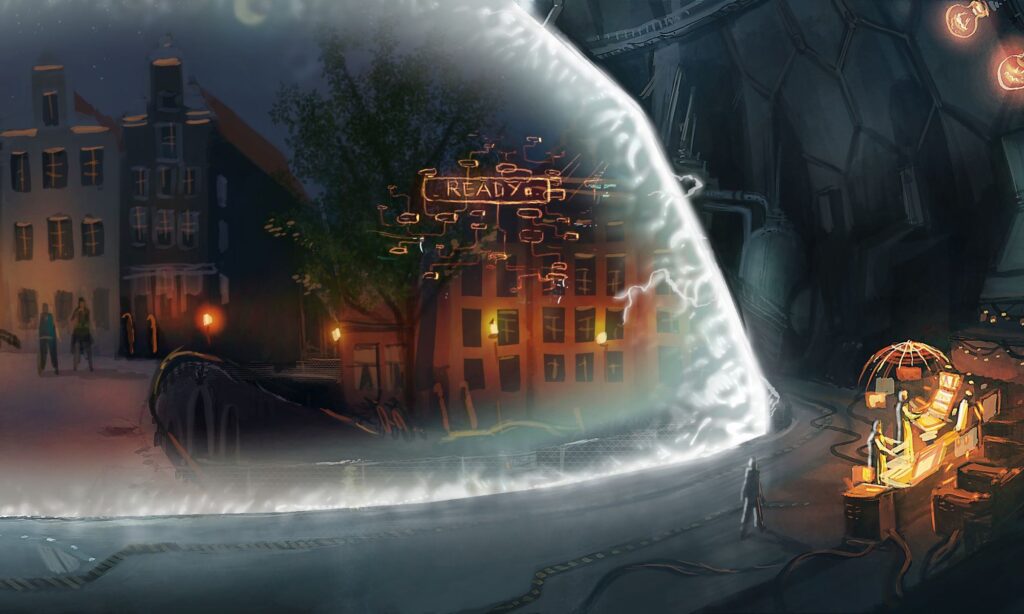
Now you might be wondering, perhaps there’s something wrong with the lines that I drew here. The diagram is after all getting pretty complicated at this point. To simplify things and really nail this home, let’s imagine that our FTL messages are not just faster than light, but they’re instantaneous. Modifying means that the original Earth message must be parallel to the space axis because no time transpires.
And similarly, the reply must now be parallel to the STL ship’s space axis, the red dash line. And we can see that this simplified picture adds to exactly the same result all by one that’s even more extreme. So the causality violation isn’t some mere academic issue here, it opens the door to time travel paradoxes. And remember that we didn’t assume any particular FTL system here. This applies to them all.
Whenever you have an FTL system, you also have a time travel machine. A machine capable of creating paradoxes in time. In one of my personal favorites, we tackled time travel in a previous video along with the paradoxes that it elicits. Physicists despise problems like the grandfather paradox because they undermine the logical underpinnings of our universe and no good solution exists to resolve them.
It was the late Stephen Hawking who posed the most accepted way out. Put simply, time paradoxes and is not possible. Hawking’s famous chronology protection conjecture suggests that the laws of nature are arranged in such a way that time paradoxes simply cannot happen. Whenever you try, some physical effect will prevent you from achieving that goal. What might this look like for an FTL system then?
Such for example, the Alcubierre drive that we discussed earlier. How is it that Hawking is going to somehow save us here? Well, it turns out that in that case, Hawking himself may have really done so in his previous work. Because recall that one of the problems with the Alcubierre drive is that they generates enormous amounts of radiation inside the bubble. What kind of radiation? Well, it’s Hawking radiation.
That radiation in fact builds up exponentially and rapidly destabilizes the bubble. Crucially, Hawking radiation is a quantum effect and record that a unified theory of quantum mechanics and gravity so far alludes to us. So even though we don’t truly understand how quantum effects and gravity play together, Hawking’s chronology protection conjecture essentially argues that it’s in that missing knowledge that the answer lies.
That one day we will discover a unified theory that neatly explains why time travel paradoxes can never happen. And thus why FTL systems to are not allowed. I promised you something definitive about FTL and now we have it. Unfettered use of FTL systems can break causality and cause paradoxes. Hawking predicts that such violations are impossible, and so by that logic, does that mean that FTL is in turn impossible?
Not quite. One way that we might be able to salvage FTL and satisfy Hawking, is to consider that, “Hey FTL is possible, it’s just that there are strict rules about its use. “After all, when we removed the STL ship from our spacetime diagram, there were no violations of causality or even more subtly just demanding that the ship never intervenes leads to no paradoxes.
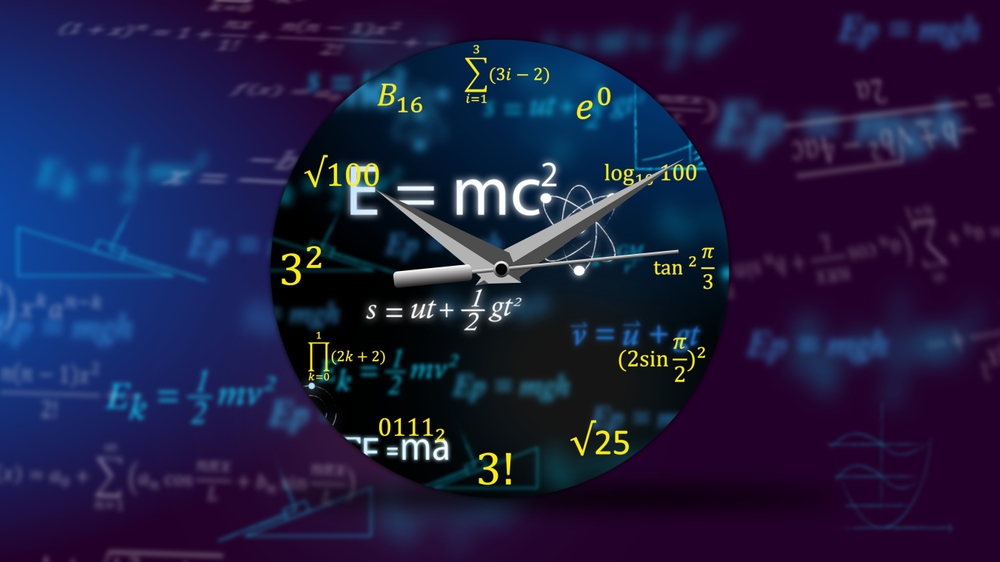
Perhaps FTL systems are possible but somehow specific paradox-causing activities like replying to that original FTL message, are forbidden. This sounds a little contrived, but it provides at least a possible way out for FTL. The other option is just to reject Hawking’s conjecture outright to suppose that paradoxes are allowed and deal with the enormously challenging consequences of making sense of the universe with their inclusion.
As hard as a pill as it is to swallow, we have to accept that FTL systems have fundamental problems here that go beyond engineering or energetics. But remember, exploration of the galaxy is not impossible without FTL, it just takes a lot longer. It would mean that our efforts to explore space are not about personal gain or egotistical pleasure but rather are performed in service of the next generation and those beyond that. I think also you would love to read about the Story Of The Smartest Man Who Ever Lived.
That as individuals, we would act selflessly and as a species for a unified common goal. Perhaps then in the end, no FTL is a blessing in disguise, because it might compel us to work together for the future for something bigger than ourselves. So until next time, stay thoughtful and stay curious.
Source-Special thanks to Prof Matt Buckley for fact-checking and his great blog article that inspired. THANK-YOU to our supporters D. Smith, M. Sloan, C. Bottaccini, D. Daughaday, A. Jones, S. Brownlee, N. Kildal, Z. Star, E. West, T. Zajonc, C. Wolfred, L. Skov, G. Benson, A. De Vaal, M. Elliott, B. Daniluk, M. Forbes, S. Vystoropskyi, S. Lee, Z. Danielson, C. Fitzgerald, C. Souter, M. Gillette, T. Jeffcoat, H. Jensen, J. Rockett, N. Fredrickson,
D. Holland, E. Hanway, D. Murphree, S. Hannum, T. Donkin, K. Myers, A. Schoen, K. Dabrowski, J. Black, R. Ramezankhani, J. Armstrong, K. Weber, S. Marks, L. Robinson, F. Van Exter, S. Roulier, B. Smith, P. Masterson, R. Sievers, G. Canterbury, J. Kill, J. Cassese, J. Kruger, S. Way, P. Finch, S. Applegate, L. Watson, T. Wheeler, E. Zahnle, N. Gebben, J. Bergman, E. Dessoi, J. Alexander, C. Macdonald, M. Hedlund, P. Kaup, C. Hays, S. Krasner, W. Evans, J. Curtin, J. Sturm, RAND Corp, T. Kordell, T. Ljungberg & M. Janke.
References:: ► Alcubierre, M., 1994, “The warp drive: hyper-fast travel within general relativity”, Classical and Quantum Gravity, 11 L73: https://arxiv.org/abs/gr-qc/0009013 ► Pfenning, M. & Ford, L., 1997, “The unphysical nature of Warp Drive”, Classical and Quantum Gravity, 14, 1743: https://arxiv.org/abs/gr-qc/9702026 ► Finazzi, S., Liberati, S., Barceló, C., 2009, “Semiclassical instability of dynamical warp drives”, Physical Review D., 79, 124017: https://arxiv.org/abs/0904.0141 ► McMonigal, B., Lewis, G., O’Byrne, P., 2012, “Alcubierre warp drive: On the matter of matter”, Physical Review D., 85, 064024: https://arxiv.org/abs/1202.5708 ► Everett, A., 1996, “Warp drive and causality”, Physical Review D, 53, 7365: https://journals.aps.org/prd/abstract… ► For a more rigorous breakdown of the axis flipping in Minkowski spacetime, see Chapter 3 of “Special Relativity” by Valerio Faraoni (Chapter 3 is also available here https://williamsgj.people.cofc.edu/Mi…)
I hope you guys find the answer to what are time paradoxes. Thank you for Reading our article. Don’t forget to subscribe to our YouTube channel and click the like on our Facebook, Twitter, Instagram and Pinterest. Your support means a lot to us. All social media links are found on the very down of this page.
I hope you like our article about Why Going Faster Than Light Leads to Time Paradoxes.
Feel free to comment more down below your idea and don’t hesitate to share or pin our article…
You Might Like-
Ceylebrity News And Blog- WWW.CEYLEBRITYNEWS.COM
Visit Our Online Shopping Website- WWW.CEYLEBRITY.COM
Ceylebrity Sinhala News- WWW.CEYLEBRITYNEWS.LK
Share.......
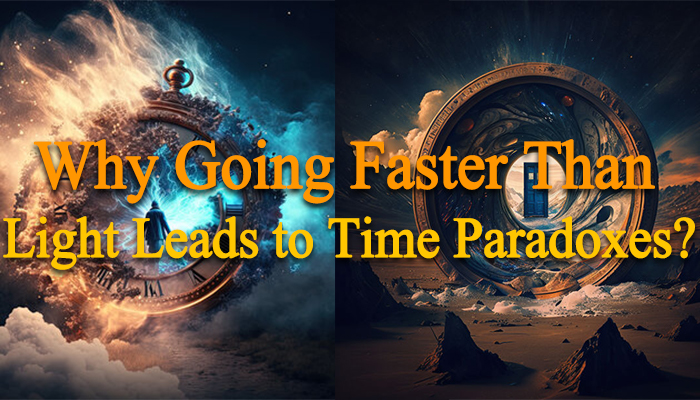



1 thought on “Why Going Faster Than Light Leads to Time Paradoxes | 2023”